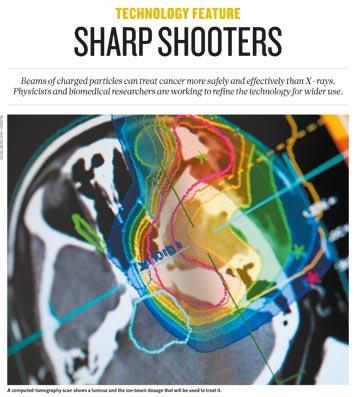Accelerator Applications for Cancer Therapy Highlighted in Nature Article
April 9, 2014

Technology feature in Nature
"Beams of charged particles can treat cancer more safely and effectively than X-rays. Physicists and biomedical researchers are working to refine the technology for wider use."
So starts a special technology feature in the April 3 issue of Nature—an article that draws in large part on the experts gathered by Brookhaven Lab accelerator physicist Stephen Peggs and Karen McNulty Walsh of the Lab’s Media & Communications Office at a symposium on this subject at the 2014 meeting of the American Association for the Advancement of Science (AAAS). Like the symposium, the article highlights advances in cancer therapy using protons and other charged particles, the radiobiological rationale for why these treatments should be more effective with fewer side effects, and new accelerator designs that could make this promising treatment more affordable and available to patients around the world.
Peggs is prominently quoted for his role in developing a prototype ion Rapid Cycling Medical Synchrotron in partnership with Best Medical International, and testing out superconducting magnet designs that could make beam-delivery systems more compact and less costly. Other participants in Brookhaven’s AAAS session are quoted as well, including Kathryn Held, a radiobiologist at Harvard Medical School and Massachusetts General Hospital, who comes to Brookhaven to conduct studies of how charged-particle radiation affects cells at the NASA Space Radiation Laboratory.
McNulty Walsh and Peggs worked with Nature technology editor Vivien Marx to help convey the science and other issues surrounding the transfer of promising accelerator technologies from the realm of fundamental physics to clinical practice and possible cancer cure. You can read Marx’s full article here: http://www.nature.com/nature/journal/v508/n7494/full/508133a.html
2014-4782 | INT/EXT | Newsroom









